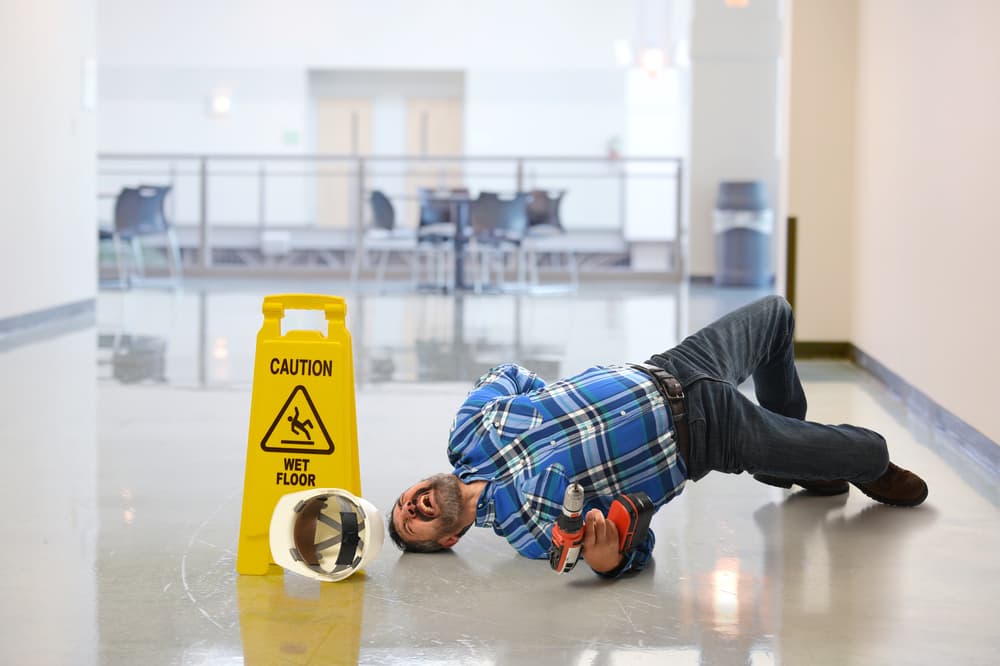When individuals and entities behave negligently or carelessly, serious accidents, including motor vehicle collisions, premises accidents, and construction site accidents, may occur. When an accident victim strikes their head on a solid surface or the ground, they may suffer a disabling head or brain injury that leads to both short and long-term complications.
If you or a person you care about suffered a head injury in an occurrence stemming from negligence, you are not alone. An experienced catastrophic injury attorney in Atlanta can evaluate your circumstances and determine your eligibility for filing a personal injury claim with the at-fault party's insurance company.
If you are eligible to move forward with a claim, your attorney can handle every step of the process for you, including all communications with insurance company representatives. If litigation becomes necessary in your case, your lawyer can represent you at a personal injury trial or alternative dispute resolution (ADR) hearing.
Schedule a Free Initial Consultation Today!
Short and Long-term Complications of a Head Injury
Traumatic head or brain injuries can give rise to a spectrum of medical complications, both in the short term and over the long term. In the immediate aftermath, victims often experience cognitive impairments, ranging from confusion and memory loss to difficulty concentrating. These short-term cognitive challenges can significantly affect daily functioning, making simple tasks more arduous.
Physical symptoms are also prevalent in the short term. Headaches, dizziness, and nausea commonly accompany traumatic head injuries. Sleep disturbances, including insomnia or excessive drowsiness, may further exacerbate the victim's immediate challenges. These physical manifestations underscore the immediate toll on the individual's overall well-being.
In the short term, emotional and psychological complications are noteworthy. Mood swings, heightened irritability, or emotional lability can be prominent features. Anxiety and depression may also emerge, partly as a reaction to the sudden changes in the individual's life and capabilities. Coping with the immediate aftermath of a traumatic head or brain injury often involves navigating these complex emotional challenges.
Over the long term, cognitive impairments may persist, presenting ongoing challenges for the individual. Memory deficits, difficulties with problem-solving, and reduced processing speed can hinder the individual's ability to perform tasks that were once routine. These cognitive complications can have profound implications for both personal and professional aspects of the victim’s life.
Chronic headaches, often evolving into migraines, are common long-term physical complications of traumatic head or brain injuries. These headaches may persist for an extended duration, affecting the individual's quality of life and requiring ongoing management.

Behavioral changes are another notable long-term complication. Individuals may experience alterations in personality traits, becoming more impulsive or exhibiting poor judgment. These behavioral shifts can strain relationships and complicate social interactions, introducing challenges that extend beyond the physical aspects of the injury.
Seizures may develop as another long-term consequence, particularly in cases involving damage to the brain's structure. These seizures can pose additional health risks and necessitate ongoing medical monitoring and management.
Overarching all these complications, the potential for long-term psychological consequences remains significant. Post-traumatic stress disorder (PTSD), anxiety, and depression can persist, affecting the individual's mental health and necessitating comprehensive psychological support.
Understanding the common short-term and long-term medical complications of traumatic head or brain injuries underscores the intricate nature of recovery. Medical professionals, rehabilitation specialists, and mental health experts play crucial roles in addressing these complications, helping individuals navigate the complexities of post-injury life, and promoting optimal recovery.
Types of Occurrences That Cause Head Injuries
Negligence, when it manifests in various situations, can lead to traumatic head or brain injuries, creating a spectrum of scenarios where individuals face severe consequences. Motor vehicle accidents are a primary contributor to head injuries resulting from negligence. Reckless driving, failure to obey traffic signals, or distracted driving can culminate in collisions, causing significant head trauma to occupants of vehicles involved in the accident.
Slip-and-fall incidents represent another common avenue for head injuries resulting from negligence. Property owners or managers failing to address hazardous conditions, such as wet floors, uneven surfaces, or inadequate signage, contribute to the likelihood of slips and falls. The impact of these falls can result in traumatic head injuries, especially if the victim strikes their head on a hard surface during the fall.

Workplace accidents, marked by negligent safety practices or inadequate training, also expose individuals to the risk of traumatic head injuries. Falls from heights, accidents involving heavy machinery, or objects falling from elevated surfaces can lead to severe head trauma when workplace management has neglected proper safety measures.
In the realm of sports and recreational activities, negligence in implementing safety protocols can result in traumatic head injuries. From inadequate protective gear to lack of supervision or failure to enforce rules, participants in sports or recreational pursuits may be at risk of sustaining head injuries due to negligence.
Negligence in security or safety measures that results in assaults or physical altercations can also lead to traumatic head injuries. In settings such as poorly monitored public spaces or establishments, the failure to prevent or promptly address altercations may result in individuals suffering head trauma due to the negligence of those responsible for security.
How to Prove Legally the Elements of a Head Injury Case
Establishing the legal elements of a personal injury claim or lawsuit involving a traumatic head or brain injury requires a methodical approach to building a comprehensive case.
- Duty of Care — The foundational element demonstrates the existence of a duty of care the responsible party owes to the injured victim. In a car accident, for instance, drivers have a duty to drive safely. Establishing this duty forms the basis for evaluating subsequent legal elements.
- Breach — The next step involves proving a breach of that duty, highlighting how the responsible party failed to uphold the expected standard of care. For example, in a slip-and-fall case, demonstrating that a property owner neglected to address a hazardous condition, such as a wet floor, without proper warning signage establishes a breach of duty. This is a crucial element, as it lays the groundwork for asserting negligence in the legal context.
- Causation — Causation involves proving a direct connection between the breach of duty and the traumatic head or brain injury the victim has sustained. In a workplace accident, demonstrating how the lack of safety training or failure to enforce safety protocols directly led to the head injury is essential. Establishing causation solidifies the link between the negligent actions and the resulting harm.
- Damages — Documenting the damages incurred is a key component of a personal injury claim involving traumatic head or brain injuries. This encompasses both economic and non-economic damages. Economic damages include medical payments, rehabilitation costs, and any lost income due to the injury. Non-economic damages, such as pain and suffering or emotional distress, delve into the intangible repercussions of the injury on the victim's life.
- Expert Testimony — Expert testimony often plays a pivotal role in establishing the severity and long-term consequences of traumatic head or brain injuries. Medical professionals may provide insights into the nature of the injury, potential complications, and the effects on the victim's overall well-being. These expert opinions contribute to bolstering the case and providing a comprehensive understanding of the damages incurred.
- Legal Representation — Finally, effective legal representation is paramount in navigating the complexities of a personal injury claim. Skilled attorneys guide victims through the process. They collect all necessary evidence, adequately address all legal elements, and present the case persuasively. Their role is integral in advocating for the victim's rights and pursuing the compensation deserved for the traumatic head or brain injuries resulting from another party's negligence.
Determining the Value of a Head Injury Claim or Lawsuit
Valuing a head injury case stemming from another party's negligence is a nuanced process that requires a thorough examination of various factors to ensure fair compensation for the victim. One primary consideration is the extent of the head injury itself. Assessing the severity, nature, and long-term implications of the injury is crucial. This involves a comprehensive evaluation of medical records, diagnostic imaging, and expert opinions to establish the scope of the damage sustained.
The effects on the victim's life play a pivotal role in determining the value of a head injury case. Considerations extend beyond immediate medical expenses to encompass the ongoing costs of rehabilitation, therapy, and any necessary long-term care. Additionally, the potential loss of earning capacity due to the head injury is a significant factor, demanding a meticulous analysis of the victim's occupation, career trajectory, and the extent to which the injury hinders their ability to work.
Pain and suffering, both physical and emotional, form integral components in valuing a head injury case. Quantifying the non-economic consequences involves considering the subjective experiences of the victim, the limitations imposed on their daily activities, and the emotional distress endured. Expert testimony and psychological evaluations may provide valuable insights into the long-term effects on the victim's mental and emotional well-being.
The duration and prognosis of the head injury are also key determinants. A comprehensive understanding of the expected recovery time and any potential complications ensures a more accurate assessment of the damages. Long-term consequences, such as cognitive impairment, memory loss, or changes in personality, significantly influence the overall value of the case.
Past and future medical expenses, including costs related to surgeries, medication, therapy, and ongoing medical care, contribute to the economic damages. Meticulously documenting and projecting these expenses to capture the full financial repercussions of the head injury over the victim's lifetime is essential.
The victim's age and life expectancy factor into the calculation as well. Younger individuals may face more extended periods of economic loss due to their head injury, and this is important when determining compensation.
Economic damages, including medical expenses and lost income, provide a tangible foundation for the case's valuation. However, the intangible losses, such as pain, suffering, and diminished quality of life, demand careful consideration to arrive at a comprehensive and equitable value for a head injury case resulting from another party's negligence. This intricate process involves a collaborative effort between legal professionals, medical experts, and other specialists to ensure a fair and just resolution for the victim.
What Happens During Litigation in a Head Injury Case?

Navigating a personal injury case involving a head injury necessitates a series of structured litigation steps aimed at securing fair compensation for the victim. The litigation process proceeds as follows:
- The process begins with filing a complaint, a legal document outlining the details of the case, including the negligent party's actions, the injuries sustained, and the damages sought. This initiates the formal legal process.
- Following initiation of the lawsuit, counsel for the injured party serves the at-fault party (or defendant) with the complaint. The at-fault party has a specific timeframe in which to respond. Their response typically outlines their position on the allegations and may include any potential legal defenses.
- Subsequently, the process of discovery unfolds, allowing both parties to exchange information relevant to the case. Interrogatories, requests for documents, and depositions provide a comprehensive overview of the facts and evidence each side intends to present.
- Medical examinations are a crucial component, especially in head injury cases. Independent medical professionals assess the extent of the head injury, its effects on the victim's life, and any potential long-term consequences. These expert opinions contribute to the development of a robust case strategy.
- As the case progresses, either party may file pre-trial motions. Motions can seek various legal determinations, from dismissing certain claims to requesting summary judgment based on the evidence presented. Resolving these motions shapes the scope and trajectory of the case leading up to trial.
- Negotiations often play a pivotal role in personal injury case. During negotiations, mediation can facilitate the parties’ settlement discussions. The goal is to reach a mutually acceptable resolution that provides fair compensation for the victim without the need for a protracted trial. However, if a settlement proves elusive, the case proceeds to trial.
- During the trial, each side presents its case, including witness testimonies, expert opinions, and any relevant evidence. In a head injury case, the focus remains on establishing the negligence of the defendant, the extent of the head injury, and the resulting damages. Legal professionals employ effective courtroom strategies to persuade the judge or jury.
- Post-trial motions may follow the rendering of a verdict, offering opportunities to contest legal issues that may have arisen during the trial. If the case progresses without a settlement or resolution through motions, the final phase involves the enforcement of the judgment. This entails securing the awarded compensation for the victim.
Throughout these litigation steps, legal professionals and medical experts collaborate to build a compelling case that accurately reflects the consequences of the head injury, allowing for a comprehensive pursuit of justice on behalf of the victim.
Speak with an Experienced Personal Injury Lawyer About Your Case Today
Dealing with a disabling head injury is complicated enough on its own without considering the potential legal ramifications. If you or a person you love suffered a head or brain injury in a recent accident that resulted from someone else's negligence, a skilled personal injury attorney can manage your case for you and work to maximize the monetary recovery you receive for all your accident-related losses.




























